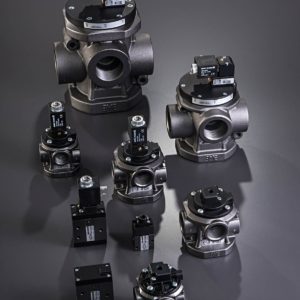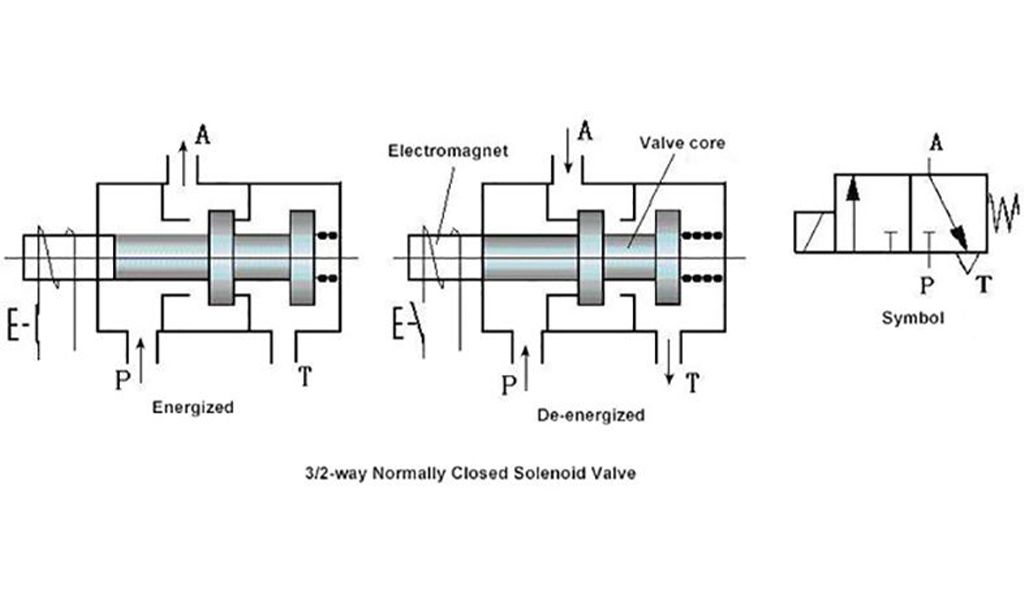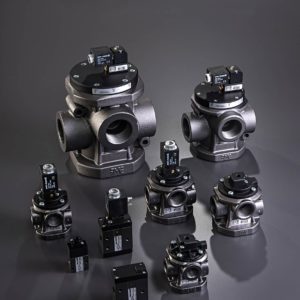Description and function of 3/2 Valves
The Pneumatic Valves
Definition of Valve: device for the control, the start / stop / direction regulation, pressure, and passage control of a fluid coming from a hydraulic pump, a compressor, a vacuum pump or an accumulator or container under pressure.
Valve is a definition that according to international language applies to all types of construction such as slide, ball, plate, shut-off valve.
The choice of a valve depends on the pneumatic system. The most important factors are the function to be performed, the type of piloting and the attack. The attack simultaneously establishes the passage dimension.
The valves used in pneumatics controls, directs and regulates the flow, pressure and the direction of the compressed air by opening, closing, or partially obstructing various passageways. To do this, energy is necessary, trying to achieve the maximum effect with minimum consumption. The control energy is related to the type of actuation of the valve that can be:
- Manual
- Mechanical (Solenoid valve)
- Electric (Motor)
- Hydraulic
- Pneumatic
According to their function, the valves are separated in the following main groups:
- Distributor valves
- Regulating valves
Distributor valves
The distribution valves are used to manage the flow of compressed air in terms of start, stop and direction passing. The number of ways to control determines the use of a two, three, four or more way valve.
The following ways are considered: connections to the compressed air network, deviations for users and discharge openings. The so-called “shut-off fittings gauge cock” are part of the two-way valves since they have a power connection (1st way) and a connection for use (2nd way). The passage of compressed air can take place with the valve open both from left to right and vice versa.
Regulating valves
The regulating valves allow to vary one of the two fundamental parameters of the compressed air which are the flow rate and the pressure. In cylinders the first influences the speed of the rod movement, the second changes the force exerted. The regulating valves are divided into the following categories:
- Flow control valve: this is a simple adjustable restriction that limits the flow of air in both directions.
- Unidirectional flow regulator valve: much more used type than the previous one that associates a flow regulator valve and a one-way valve.
- Pressure limiting valve and sequence valve: device that prevents the pressure from rising beyond unwanted values
3/2 Valves
A 3/2 valve has three ports and two positions. The two positions refers to two different working positions (ON, OFF) of the pneumatic solenoid valve core. The valve core controls different gas passages when the valve gains and losses power. The pneumatic valve body has three ports, i.e. A, P and T, of which one (P) is for inlet and two (A & T) are for outlet: one of the outlets is normally open and the other is normally closed. 3/2 valves can be divided into normally closed and normally open modes. A 3/2 valve is usually used together with a single acting pneumatic actuator and adopts a single electric control, namely the single coil.
A 3/2 way valve has three ports and two positions which can be operated pneumatically, mechanically, manually or electrically via a solenoid valve.
3/2 valves can be used for:
- control a single action cylinder
- operate pneumatic actuators
- blow molding applications
- the release of pressure
In the case of a cylinder control, the valve is used for filling and subsequent draining
-

3-way valves for vacuum servo- controlled by compressed air
3-way valve for interlocked vacuum, Air extraction, Moulding machinery, Standard products, Wood working machinery0,00€ Add to cart -



3-way valves, with poppet system, for compressed air
3-way valve for compressed air, Moulding machinery, Standard products, Transport, Wood working machinery0,00€ Add to cart -



3-way valves, with poppet system, for direct vacuum
3-way valve for direct vacuum, Air extraction, Food industry, Moulding machinery, Standard products, Wood working machinery0,00€ Add to cart
Operating principle of a 3/2 normally closed valve
A 2-position, 3-way normally closed valve requires fluid circulation to be inhibited when the coil is not powered (inlet and outlet are closed), or that A and P are disconnected with power off and A and T are connected with the power on. When the valve is energized it allows the passage of the fluid.
Operating principle of a 3/2 normally open valve
A 2-position, 3-way normally open valve provides that fluid circulation is allowed when the coil is not powered, or that A and P are connected with the power off. The valve is closed when it is stressed, while the valve is open when it is not stressed.
Design features of a 3/2 valve
3/2 way valves can be designed in different ways. The valve sealing mechanism can be a shutter or a spool. The main parts of the valve are the following:
- housing
- gaskets
- shutter (or slider)
- actuator
In direct operated valves, the plug is moved directly by the actuator. When designing a 3/2 valve it is necessary to consider the working conditions and the environment of a pneumatic system. In the presence of aggressive substances, the valve body and seals must be corrosion resistant. For example, in ATEX environments and in the food industry it is necessary to use special valves.
Applications of a 3/2 valve
3/2 valves are suitable for different tasks: driving pneumatic actuators, blowing applications, pressure release and vacuum control.
Operation of a cylinder
A typical application for a 3/2 valve is the operation of a single-acting cylinder. A single acting cylinder has a pneumatic port to fill and empty an air chamber. The cylinder moves in one direction filling the air chamber and comes back thanks to the force of a spring. The 3/2-way valve fills the air chamber or expels it to the atmosphere.
Blow molding, pressure release and vacuum applications.
The 3/2 way valves are suitable for blow, pressure release and vacuum applications. In most cases externally piloted or directly operated valves are required because they do not require a minimum pressure differential.
Conclusions
Mec Fluid 2 designs and manufactures a wide range of valves and solenoid valves also suitable for applications that require high flow rates. The main focus of Mec Fluid refers to valves and solenoid valves for direct vacuum. Mec Fluid 2 valves and solenoid valves are available in a wide range of sizes, with electrical and pneumatic function.

